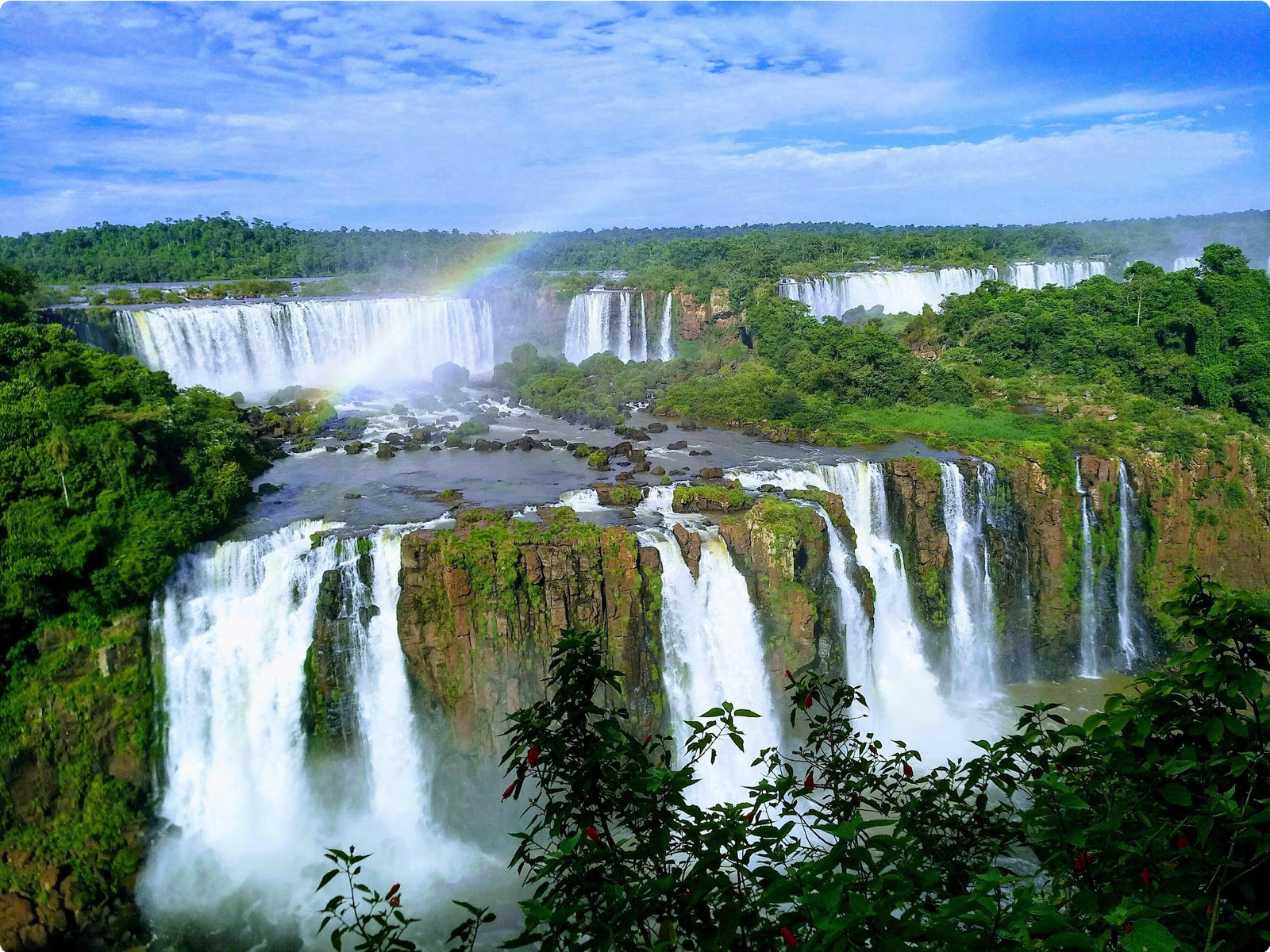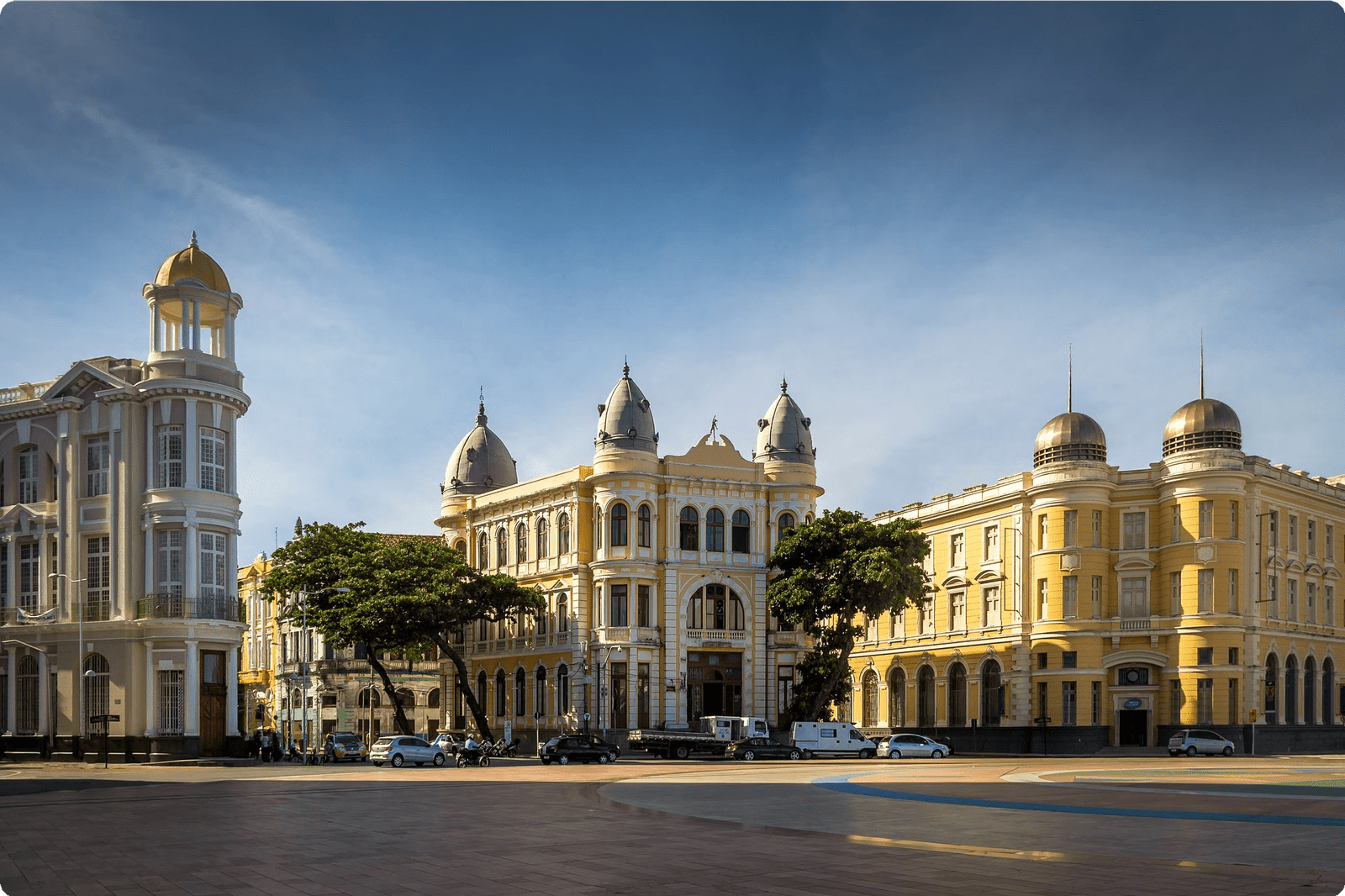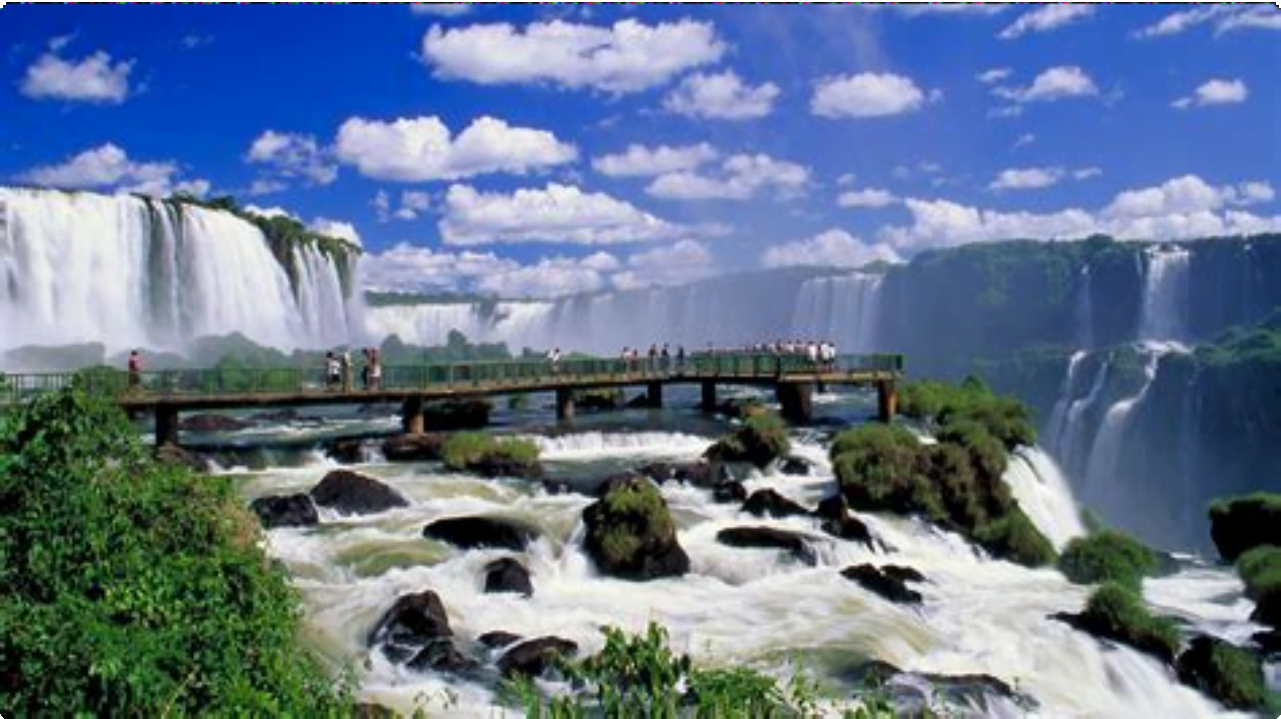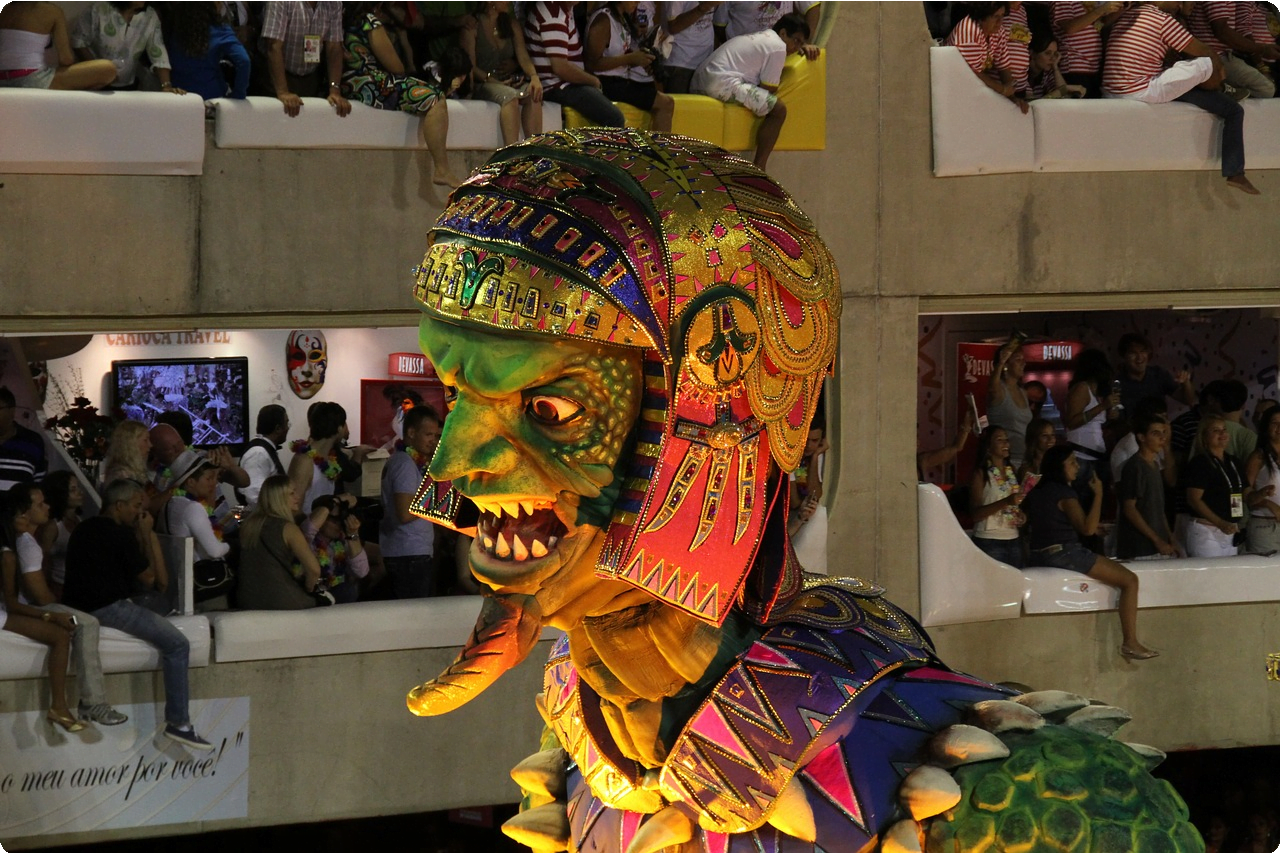Brazil
Discover Brazil
Brazil, the largest country in South America, is known for its rich culture, diverse landscapes, and vibrant cities. With a population of over 200 million people, Brazil boasts a thriving economy driven by industries such as agriculture, manufacturing, and tourism. The Brazilian real is the official currency, and the country is recognized for its delicious cuisine, including popular dishes like feijoada, pão de queijo, and brigadeiro.

From the stunning Amazon rainforest to the beautiful beaches of Rio de Janeiro, Brazil offers a wide range of experiences for travelers. Its iconic flag features a green background with a yellow diamond and a blue globe with 27 stars representing the states, while the map showcases its vast territorial expanse and diverse regions. When visiting Brazil, be sure to explore iconic cities like São Paulo, Rio de Janeiro, and Salvador, as well as natural wonders such as Iguazu Falls and Fernando de Noronha.
Geographical location
Land Area
Brazil is the fifth-largest country in the world, covering an area of over 8.5 million square kilometers. It spans four time zones and shares borders with every South American country except for Chile and Ecuador.
Geography
The landscape of Brazil is incredibly diverse, featuring the Amazon Rainforest, the world’s largest tropical rainforest. It also has extensive wetlands in the Pantanal, the towering mountain ranges of the Serra do Mar and Serra da Mantiqueira, and the stunning coastline along the Atlantic Ocean.

Climate
Brazil experiences a variety of climates, from equatorial and tropical in the Amazon to temperate in the south. The country is also home to diverse ecosystems, including the Cerrado savanna and the Caatinga desert, making it a geographically fascinating location.
Flag and National Symbols
Brazilian Flag
The Brazilian national flag is a vibrant representation of the country’s history and culture. It features a green field with a large yellow diamond in the center, containing a blue globe with 27 white stars. The green represents the lush Amazon rainforest, the yellow symbolizes Brazil’s wealth and resources, and the blue globe with stars depict the night sky over Rio de Janeiro on November 15, 1889 – the day Brazil declared itself a republic.

Coat of Arms
The Brazilian coat of arms is a prominent symbol, consisting of a blue circle with a starry sky, an equatorial river, and a national banner with the motto “Ordem e Progresso” (Order and Progress). The blue represents the Brazilian sky, and the river reflects the Amazon River, while the unconquered land is symbolized by the southern cross constellation.
National Symbols
Brazil’s national symbols include the Rufous-bellied Thrush as the national bird, the Pau-brasil as the national tree, and the Southern Cross as the national constellation. These symbols hold deep cultural significance and are proudly celebrated as part of Brazil’s rich heritage.
Currency and economy
GDP
Brazil has a GDP of over R$6 trillion, making it one of the largest economies in the world.
Unemployment Rate
The unemployment rate in Brazil is around 9.5%, reflecting the challenges and opportunities in the job market.
Brazil is known for its diverse and robust economy, driven by various industries including agriculture, mining, manufacturing, and services. The country’s currency is the Brazilian Real (BRL), which has seen fluctuations over the years but remains an integral part of the economic landscape. From bustling urban centers to rich natural resources, Brazil’s economy is a dynamic force within the global market.
Cultural Diversity
Brazil boasts a rich tapestry of cultural diversity, stemming from its indigenous roots and the influence of European, African, and Asian immigrants. This mix of heritage has resulted in a country with a vibrant and multifaceted cultural identity.
From the colorful festivals and celebrations to the variety of music, dance, and art forms, Brazil’s cultural landscape is a testament to the fusion of traditions and customs. The Brazilian people take pride in their diverse cultural heritage, which is reflected in their daily lives, customs, and traditions.
The diverse cultural fabric of Brazil is also evident in its culinary scene, with a wide range of regional dishes and flavors, each sharing a unique history and significance. Additionally, the country’s literature, architecture, and fashion further showcase the depth of its cultural diversity, making Brazil a captivating and dynamic destination for cultural exploration.
Traditional Brazilian Food
Brazilian cuisine is a vibrant fusion of indigenous, African, Portuguese, and other immigrant influences. The country’s vast and diverse landscape has contributed to a wide array of traditional dishes, each with its own unique flavors and ingredients.
Feijoada, a hearty stew made with black beans and a variety of pork cuts, is often considered the national dish of Brazil. It is typically served with rice, collard greens, and orange slices, offering a delicious mix of textures and flavors.

Another popular dish is Moqueca, a fragrant fish stew cooked in coconut milk, palm oil, tomatoes, onions, and cilantro, offering a burst of tropical flavors that represent the coastal regions of the country.

Pão de queijo, a cheese bread made with cassava flour and cheese, is a beloved snack found throughout Brazil. Its crispy exterior and soft, chewy interior make it a favorite among locals and visitors alike.
Famous Landmarks in Brazil
Christ the Redeemer
Perched atop the Corcovado mountain, the iconic Christ the Redeemer statue offers breathtaking panoramic views of Rio de Janeiro. This colossal statue, standing at 98 feet tall, is a symbol of Brazilian Christianity and a UNESCO World Heritage site.

Iguazu Falls
Nestled on the border of Brazil and Argentina, the Iguazu Falls is a natural wonder comprising a series of
275 waterfalls. The falls, surrounded by lush rainforest, create a mesmerizing spectacle and are recognized as one of the most beautiful and powerful waterfalls in the world.

Sugarloaf Mountain
Rising 396 meters above the harbor, the Sugarloaf Mountain offers stunning views of Rio de Janeiro and its coastline. Visitors can reach its summit via a cable car, where they can take in breathtaking sunsets and enjoy panoramic vistas of the city’s skyline.

Best cities to visit in Brazil
Rio de Janeiro
Rio de Janeiro, known for its iconic Christ the Redeemer statue and breathtaking beaches like Copacabana and Ipanema, is an energetic city with a rich cultural scene. Visitors can explore the vibrant neighborhoods, witness the lively samba performances, and hike up to the famous Sugarloaf Mountain for panoramic views of the city.
Sao Paulo
As the largest city in Brazil, Sao Paulo offers a diverse blend of modern skyscrapers, historic architecture, and an eclectic culinary scene. The city is a hub for art, music, and nightlife, with a variety of museums, theaters, and entertainment options to explore.
Salvador
Salvador, the capital of the state of Bahia, is known for its colorful colonial architecture, rich Afro- Brazilian culture, and vibrant festivals. Visitors can experience the lively music and dance performances, explore the historic Pelourinho district, and indulge in the local cuisine and arts and crafts markets.
Brasilia
Brasilia, the capital of Brazil, is renowned for its striking modernist architecture and urban design. The city boasts a unique layout and landmarks such as the National Congress, Cathedral of Brasilia, and the JK Memorial, making it a fascinating destination for architecture and design enthusiasts.
Rio de Janeiro
Rio de Janeiro, commonly referred to as Rio, is a vibrant city known for its stunning landscapes, lively culture, and iconic landmarks. The city is renowned for its beautiful beaches, including the world-famous Copacabana and Ipanema. Visitors can explore the historic neighborhoods of Santa Teresa and Lapa, each offering a unique blend of architecture, art, and thriving nightlife. The stunning Christ the Redeemer statue atop Corcovado mountain provides breathtaking panoramic views of the city and its natural surroundings. Rio de Janeiro is also home to the colorful spectacle of Carnival, a celebration that captivates millions with its music, dance, and elaborate parades.

Moreover, the city boasts a rich cultural heritage, with a profound influence on music, dance, and literature, making it a hub for creativity and artistic expression. Visitors can indulge in the delectable Brazilian cuisine, enjoy the rhythms of samba and bossa nova, and experience the warm hospitality of the locals. Rio’s unique allure and dynamic energy continue to make it a top destination for travelers seeking an unforgettable experience in Brazil.
Sao Paulo
Sao Paulo is the largest city in Brazil and the capital of the state of Sao Paulo. It is known for its cultural diversity, vibrant arts scene, and bustling nightlife. With a population of over 12 million people, Sao Paulo is a thriving metropolis that offers a blend of modern skyscrapers and historic neighborhoods.

The city is a major financial center and is home to many multinational corporations, making it an important economic hub in South America. Additionally, Sao Paulo is recognized for its gastronomic excellence, with a diverse culinary scene that includes world-class restaurants and street food vendors.
Salvador
Salvador, the capital of the state of Bahia in northeastern Brazil, is a vibrant and colorful city known for its rich Afro-Brazilian heritage and historic architecture. With its lively music and dance scene, Salvador is often referred to as the “Home of Happiness” due to its spirited carnival celebrations and pulsating rhythms of samba and capoeira. The city boasts stunning colonial buildings, including the Pelourinho district, a UNESCO World Heritage site, which exudes an enchanting blend of Portuguese colonial and African influences.

Visitors to Salvador can immerse themselves in the local Bahian culture, taste traditional delicacies such as acarajé and moqueca, and explore the beautiful beaches along the coastline. The city’s centuries-old churches, colorful streets, and bustling markets offer a captivating glimpse into the captivating tapestry of Salvador’s history and cultural traditions.
Brasilia
Brasilia, the capital of Brazil, is a modernist marvel designed by architect Oscar Niemeyer and urban planner Lúcio Costa. The city was constructed in the late 1950s and officially became the capital in 1960, replacing Rio de Janeiro. Its striking architecture, including the Cathedral of Brasilia and the Palácio do Planalto, reflects the country’s forward-looking spirit and ambition. The city is known for its broad avenues, futuristic design, and artistic masterpieces that make it a fascinating destination for architecture enthusiasts and urban planners.

Visitors to Brasilia can explore the city’s unique layout, with sectors designated for specific functions, and immerse themselves in the vibrant cultural scene, which includes theaters, museums, and galleries. As a symbol of progress and innovation, Brasilia offers a captivating blend of history, creativity, and modernity.
Manaus
Manaus is the capital of the state of Amazonas in Brazil, located at the confluence of the Negro and Solimões rivers. It is the main entrance to the Amazon Rainforest and a bustling metropolis surrounded by unique natural beauty. The city is known for its iconic opera house, the Teatro Amazonas, which stands as a testament to the city’s historical wealth during the rubber boom.

Visitors to Manaus can explore the fascinating Meeting of the Waters, where the dark waters of the Rio Negro meet the sandy-colored waters of the Solimões, flowing side by side without mixing for several miles. The city also serves as a gateway to various eco-tourism adventures, including jungle tours, river cruises, and visits to indigenous communities.
Recife
Recife, the capital of Brazil’s Pernambuco state, is a vibrant coastal city known for its rich history, stunning architecture, and lively culture. The city is often referred to as the “Venice of Brazil” due to its network of waterways, bridges, and islands. Recife’s colonial past is evident in its well-preserved buildings, including churches, forts, and colorful old houses. The city is also celebrated for its lively arts scene, with numerous museums, galleries, and street art displays. Its sunny beaches, such as Boa Viagem, offer relaxation and water sports for locals and tourists alike. The unique blend of traditional and modern influences makes Recife a must-visit destination in Brazil.

Florianopolis
Florianopolis is the capital of the state of Santa Catarina, known for its beautiful beaches, lagoons, and natural beauty. It is located on an island connected to the mainland by a bridge, offering a unique blend of urban and natural landscapes.

The city is a popular destination for surfers, with renowned surf spots such as Praia Mole and Joaquina Beach. In addition to its stunning coastline, Florianopolis also boasts colonial architecture, vibrant markets, and delicious seafood cuisine.
Fortaleza
Fortaleza, the capital of the state of Ceará, is a vibrant city known for its stunning beaches, rich cultural heritage, and lively entertainment scene. Situated on the northeastern coast of Brazil, Fortaleza offers visitors a unique blend of modern amenities and traditional charm.

The city’s picturesque coastline is adorned with beautiful sand dunes, clear waters, and palm-fringed beaches, making it a popular destination for sun-seekers and water sports enthusiasts. In addition to its natural beauty, Fortaleza boasts a lively nightlife, diverse cuisine, and a strong focus on local arts and crafts.
Iguazu Falls
Iguazu Falls, located on the border of Argentina and Brazil, is one of the most breathtaking natural wonders in the world. The waterfall system consists of 275 individual drops, with the tallest reaching a height of 269 feet. The surrounding lush rainforest adds to the picturesque setting, making it a paradise for nature lovers and photographers alike.

The name “Iguazu” comes from the Guarani words “y” (water) and “ûasú” (big), fittingly describing the grandeur of the falls. The area is home to diverse flora and fauna, offering visitors a chance to witness the beauty of the natural world. The sound of thundering water and the mist rising from the falls create a truly immersive and unforgettable experience for all who visit.
Amazon Rainforest
The Amazon Rainforest, also known as the Amazon Jungle, is the world’s largest tropical rainforest, covering an area of over 5.5 million square kilometers. Located in South America, primarily in Brazil, it is home to an incredibly diverse range of flora and fauna, many of which are not found anywhere else on the planet.

It is often referred to as the “lungs of the Earth” due to its vital role in producing oxygen and regulating the planet’s climate. The Amazon River, the largest river by discharge volume of water in the world, flows through this lush expanse, adding to its natural beauty and significance.
Pantanal Wetlands
The Pantanal is the world’s largest tropical wetland area, covering over 140,000 square kilometers across Brazil, Bolivia, and Paraguay. It is a biodiversity hotspot and home to a rich variety of wildlife, including capybaras, anacondas, jaguars, and hundreds of bird species. The wetlands are characterized by seasonal flooding, creating a dynamic environment that supports an abundance of flora and fauna. It is a paradise for nature lovers, offering unique opportunities for wildlife observation, birdwatching, and eco- tourism activities.

The Pantanal also plays a crucial role in regulating the water cycle and mitigating the impacts of climate change, making it an ecologically significant region. Its stunning landscapes and diverse ecosystems make it a prime destination for travelers seeking immersive experiences in nature and wildlife conservation.
Fernando de Noronha
Fernando de Noronha is an archipelago located off the northeast coast of Brazil and is known for its pristine beaches, crystal-clear waters, and rich marine life. The main island, which shares the same name, is a UNESCO World Heritage site and is famous for its eco-tourism, offering activities such as snorkeling, scuba diving, and dolphin watching. The archipelago is a haven for nature enthusiasts, with its diverse ecosystem and unique wildlife. Visitors can explore its captivating landscapes, dramatic cliffs, and secluded coves, making it an idyllic destination for those seeking a serene and unspoiled tropical paradise.

The preservation efforts on the islands have ensured that the environment remains largely untouched, allowing visitors to immerse themselves in the beauty of nature. With limited access, Fernando de Noronha offers a secluded retreat, making it a perfect getaway for those looking to escape the hustle and bustle of urban life. Whether it’s enjoying breathtaking sunsets, engaging in outdoor adventures, or simply relaxing on the pristine beaches, Fernando de Noronha offers an unparalleled experience for travelers seeking an unspoiled slice of paradise.
Copacabana Beach
Copacabana Beach is one of the most famous and vibrant beaches in the world, located in Rio de Janeiro, Brazil. With its wide sandy shore, clear waters, and iconic boardwalk, Copacabana Beach has been a symbol of Brazil’s beach culture since the early 20th century. Stretching for 2.5 miles, the beach is lined with luxury hotels, lively bars, and restaurants, making it a hotspot for locals and tourists alike.
The vibrant atmosphere, colorful umbrellas, and bustling beach vendors contribute to the unique charm of Copacabana. Whether you want to relax in the sun, play beach volleyball, or experience the lively nightlife, Copacabana Beach has something for everyone.

Christ the Redeemer
Christ the Redeemer is an iconic statue of Jesus Christ located in Rio de Janeiro, Brazil. The impressive statue stands at the peak of the 700-meter Corcovado mountain, overlooking the vibrant city below. It is one of the New Seven Wonders of the World and draws millions of visitors each year.

The statue, which is made of soapstone and concrete, was completed in 1931 and has since become a symbol of Christianity across the globe. The view from the base of the statue offers breathtaking panoramic views of Rio de Janeiro, including the famous Sugarloaf Mountain, Guanabara Bay, and the Tijuca Forest.
Carnival in Brazil
Carnival in Brazil is an annual festival celebrated with great fervor and energy throughout the country. It is most famously associated with Rio de Janeiro, where the world-famous Rio Carnival takes place. The carnival is a vibrant and colorful celebration filled with music, dance, parades, and elaborate costumes. The samba schools, which are the heart of the carnival, spend the entire year preparing for the grand event, showcasing their creativity and talent during the parade. The streets come alive with a pulsating rhythm and a sense of joy as locals and tourists come together to participate in this exuberant fiesta.

The origins of the Brazilian carnival can be traced back to the Portuguese colonization period, influenced by African and indigenous cultures, and has evolved over the years to become a major cultural event.
Each region of Brazil also has its unique way of celebrating the carnival, with some cities, such as Salvador and Recife, offering their own distinct carnival experiences. From the traditional music to the electric atmosphere, the Brazilian carnival is an unforgettable experience that captures the essence of the country’s cultural vibrancy and diversity.
Brazilian Music and Dance
Brazilian music and dance are an integral part of the country’s rich cultural heritage. From samba and bossa nova to frevo and forró, Brazil’s diverse musical traditions reflect the multicultural influences that have shaped the nation’s identity. The rhythmic beats, vibrant melodies, and energetic dance movements represent the soul and spirit of Brazil, captivating audiences around the world.

Samba, with its pulsating rhythm and infectious energy, has become synonymous with Brazil and is often associated with the famous Rio Carnival. Bossa nova, on the other hand, is known for its smooth and soothing melodies, embodying the laid-back lifestyle of coastal cities like Rio de Janeiro. The colorful costumes, intricate footwork, and spirited performances of Brazilian dance forms add a dynamic and mesmerizing element to the country’s cultural tapestry.
Sports in Brazil
Brazil is known for its passionate love of sports, with football (soccer) being the most popular and widely played sport in the country. Brazilians are incredibly enthusiastic about football, and the national team has a rich and successful history in international competitions, such as the FIFA World Cup.

Aside from football, Brazil also excels in volleyball, beach volleyball, and futsal. The country has
produced world-class athletes and teams in these sports, competing and winning in various international tournaments and championships.
Furthermore, martial arts, particularly Brazilian Jiu-Jitsu, have gained global recognition and have a strong presence in Brazilian sports culture. The country also hosts annual Formula 1 races and has a growing interest in motorsports.
Conclusion
Brazil is a country known for its vibrant culture, diverse geography, and rich history. From the bustling cities to the serene natural wonders, Brazil offers a myriad of experiences to visitors. Whether exploring the Amazon rainforest, dancing in the streets during Carnival, or relaxing on stunning beaches, Brazil has something for everyone. The country’s passion for music, dance, and sports truly sets it apart. This captivating nation leaves a lasting impression on all who have the pleasure of visiting.